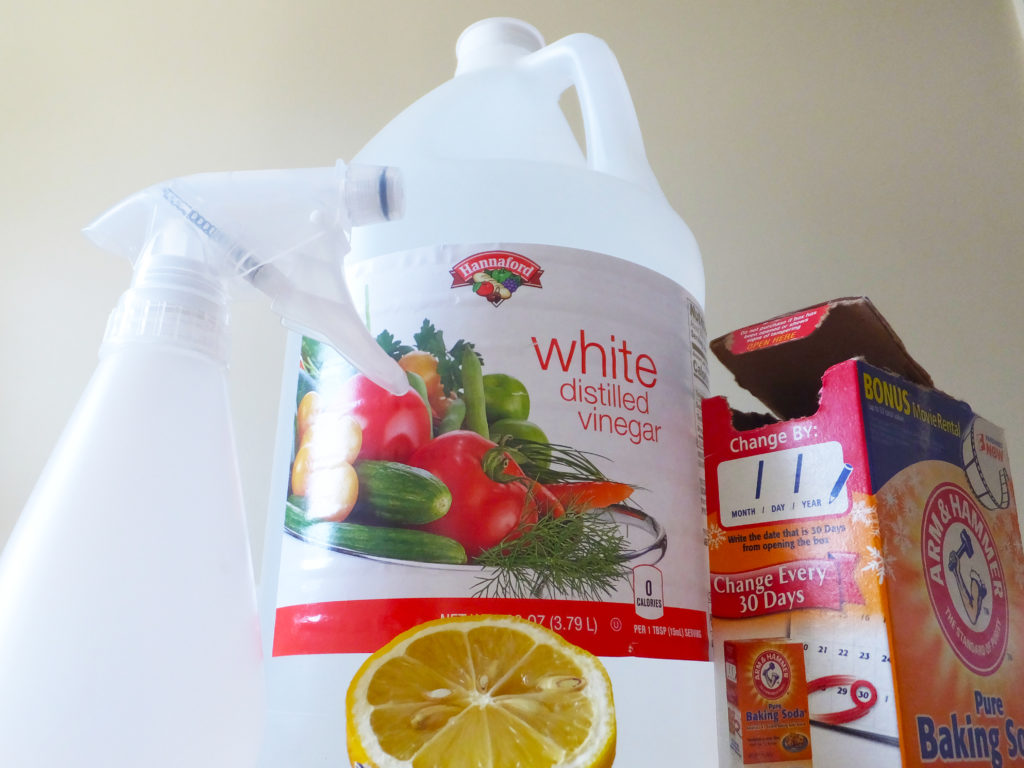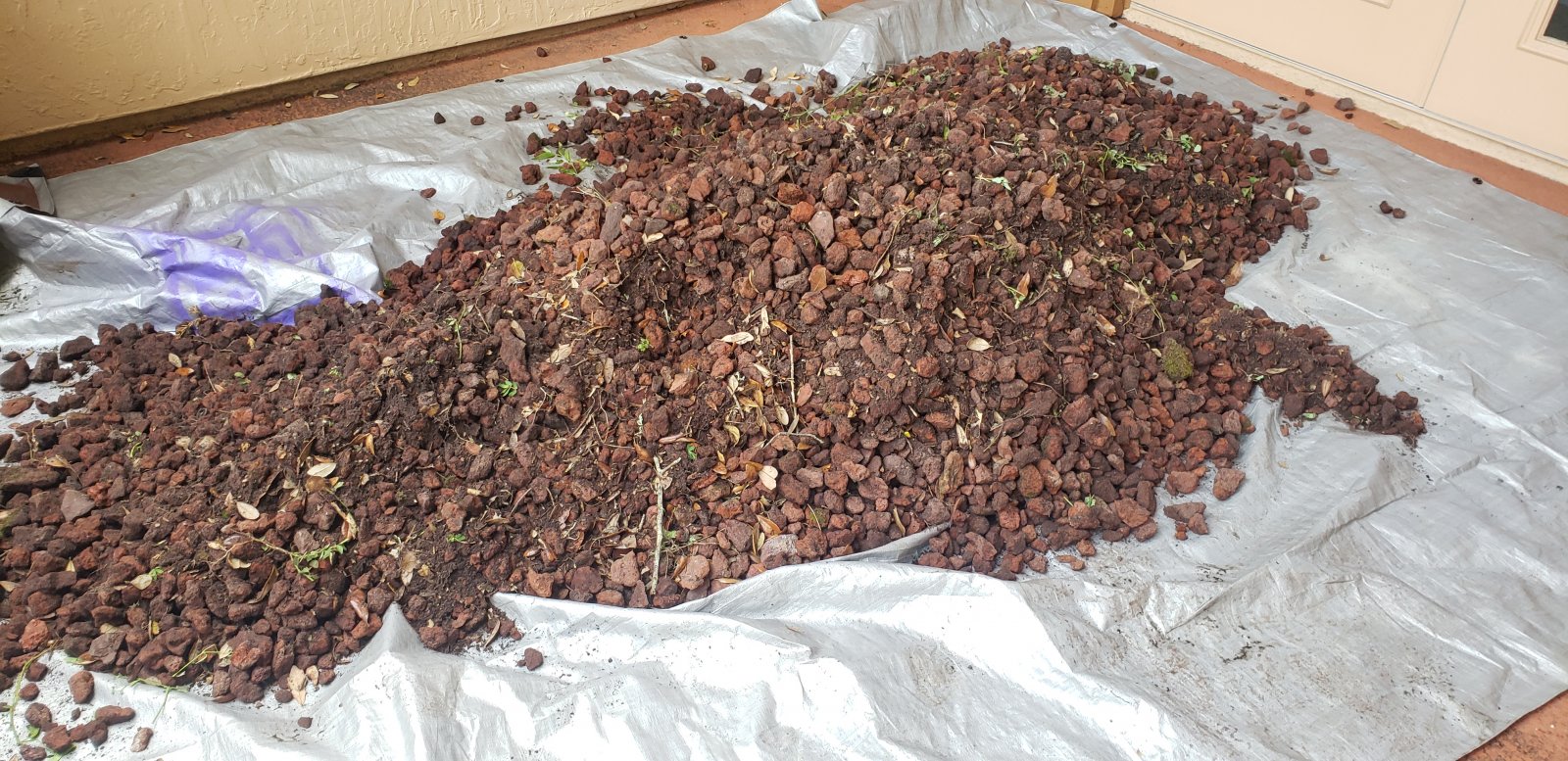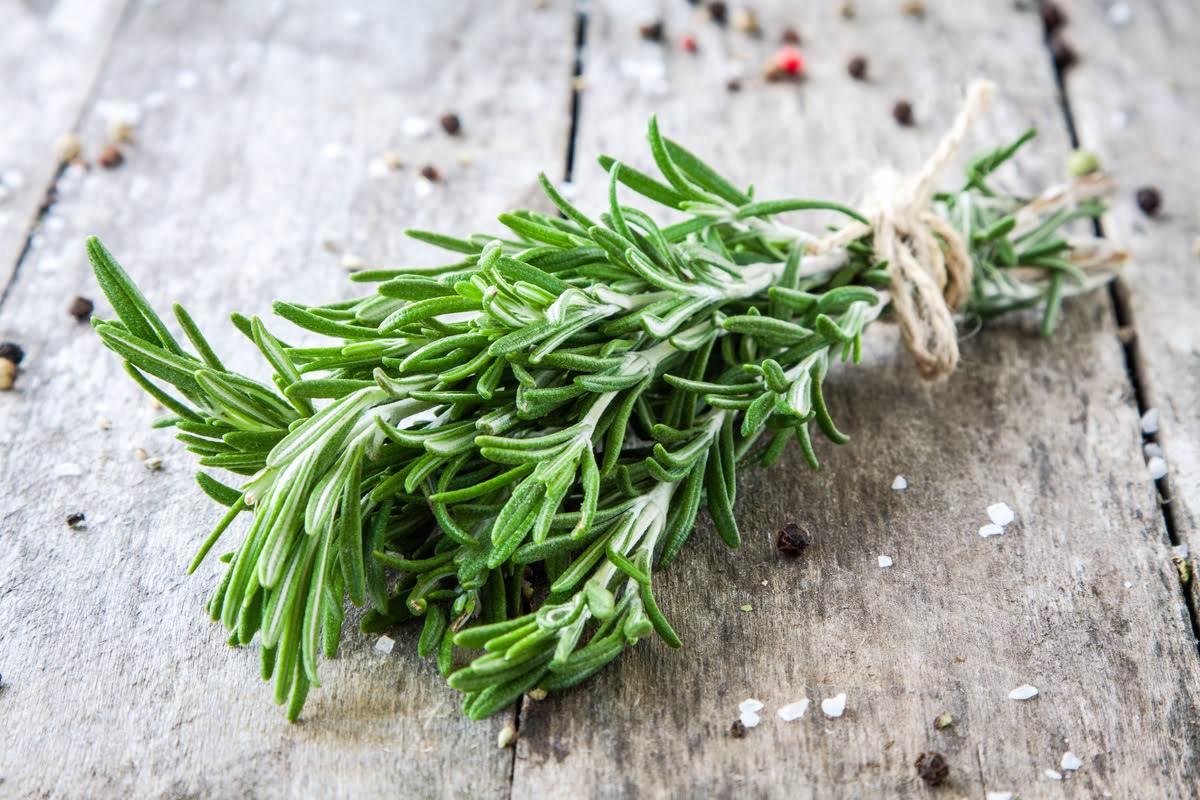Home>Gardening News and Trends>Latest News>How To Clean Vegetables With Baking Soda


Latest News
How To Clean Vegetables With Baking Soda
Modified: January 22, 2024
Discover the latest news and effective tips on how to clean vegetables with baking soda. Keep your produce fresh, germ-free, and safe for consumption with this natural cleaning method.
(Many of the links in this article redirect to a specific reviewed product. Your purchase of these products through affiliate links helps to generate commission for Chicagolandgardening.com, at no extra cost. Learn more)
Table of Contents
Introduction
When it comes to consuming fruits and vegetables, we all want to ensure that they are clean and free from any harmful residues. Washing vegetables with water alone may not always be enough to remove stubborn dirt, pesticides, and bacteria. That’s where baking soda comes in. Not only is it commonly found in most households, but it is also an effective and natural way to clean and sanitize vegetables.
Baking soda, or sodium bicarbonate, has been used for centuries as a versatile household cleaner and has gained popularity in recent years for its numerous health benefits. Its alkaline nature makes it a powerful cleaning agent that can help remove dirt, chemicals, and microorganisms from the surface of vegetables.
In this article, we will explore the benefits of using baking soda to clean vegetables and provide a step-by-step guide on how to do it effectively. Whether you grow your own produce or buy it from the store, incorporating baking soda into your vegetable cleaning routine can be an excellent way to ensure that you and your loved ones are consuming cleaner, safer, and healthier vegetables.
So, let’s dive in and discover the wonders of cleaning vegetables with baking soda.
Why Use Baking Soda to Clean Vegetables?
When it comes to cleaning vegetables, you may be wondering why baking soda is a preferred choice over other cleaning agents. Here are a few reasons why baking soda is highly recommended for cleaning vegetables:
- Natural and Non-Toxic: One of the primary advantages of using baking soda is that it is a natural and non-toxic substance. Unlike some commercial cleaners that contain harsh chemicals, baking soda is safe to use on food and does not leave behind any harmful residues.
- Effective Cleaning Agent: Baking soda is a mild abrasive that can effectively remove dirt, pesticides, and waxy coatings from the surface of vegetables. Its fine particles help to gently scrub away impurities without causing any damage or altering the taste of the produce.
- Antibacterial Properties: Baking soda has natural antibacterial properties that can help kill bacteria and inhibit their growth. This can be particularly beneficial when cleaning leafy greens and other produce that may harbor bacteria or other microorganisms.
- Neutralizes Pesticides: Many fruits and vegetables are sprayed with pesticides to protect them from pests. Baking soda can help neutralize and remove pesticide residues, making your produce safer to consume.
- Improves Texture and Flavor: Baked goods are not the only things that benefit from baking soda. When used to clean vegetables, baking soda can help to remove any residual bitterness or off-flavors, resulting in a more enjoyable eating experience.
By choosing to clean your vegetables with baking soda, you can have peace of mind knowing that you are using a natural, effective, and safe method to remove impurities and enhance the overall cleanliness of your produce.
The Benefits of Using Baking Soda to Clean Vegetables
Using baking soda to clean vegetables offers several benefits that go beyond just removing dirt and pesticides. Let’s take a closer look at some of these advantages:
- Safe for Consumption: Baking soda is a natural and non-toxic substance, making it safe to use on vegetables that will be consumed. Unlike some commercial cleaners that may leave chemical residues or have potential health risks, baking soda provides a safe cleaning solution.
- Removes Surface Contaminants: Baking soda’s mild abrasive nature helps to remove surface contaminants like dirt, oils, and debris, which may not be effectively eliminated by water alone. This makes baking soda an excellent choice for cleaning produce that has a rough or textured surface, such as root vegetables.
- Eliminates Pesticide Residues: The use of pesticides on crops is common to protect them from pests. However, these pesticides can leave behind residues on the surface of the vegetables. Baking soda can help neutralize and remove these pesticide residues, reducing your exposure to harmful chemicals.
- Enhances Food Safety: Vegetables can sometimes harbor harmful bacteria, such as E. coli and Salmonella. Baking soda’s antibacterial properties can help kill and inhibit the growth of these bacteria, reducing the risk of foodborne illnesses.
- Improves Shelf Life: Baking soda can help extend the shelf life of certain vegetables by inhibiting the growth of mold and bacteria. By cleaning your vegetables with baking soda, you can help them stay fresher for longer.
- Adds Crunchiness and Freshness: Baking soda can enhance the texture of certain vegetables, making them crispier and fresher. This is particularly noticeable with leafy greens such as lettuce and spinach.
- Economical and Environmentally Friendly: Baking soda is an affordable and readily available cleaning agent that is environmentally friendly. By using baking soda, you can reduce your reliance on harsh chemical cleaners and contribute to a more sustainable lifestyle.
With all these benefits, it’s clear that using baking soda is a practical and effective method to clean your vegetables. Not only does it remove contaminants and improve food safety, but it also helps maintain their freshness, texture, and overall quality.
How to Clean Vegetables with Baking Soda
Cleaning vegetables with baking soda is a simple process that requires only a few common household ingredients and minimal effort. Follow these steps to effectively clean your vegetables using baking soda:
Step 1: Prepare the Solution
Fill a clean sink or bowl with water. Add 1 tablespoon of baking soda for every 2 cups of water. Stir the solution to dissolve the baking soda.
Step 2: Soak the Vegetables
Submerge your vegetables in the baking soda solution. Make sure all parts of the vegetables are fully immersed. Allow them to soak for about 15-20 minutes. This will help loosen dirt, pesticides, and other impurities.
Step 3: Rinse Thoroughly
After the soaking period, remove the vegetables from the solution. Rinse them thoroughly under running water to remove any remaining baking soda residue and impurities. Use your hands or a gentle vegetable brush to scrub the surface of the produce as needed.
Step 4: Dry the Vegetables
Once rinsed, pat dry the vegetables with a clean kitchen towel or allow them to air dry. It’s important to ensure that they are thoroughly dry before storing or cooking.
Optional Step: Vinegar Rinse
If desired, you can follow up the baking soda cleaning process with a vinegar rinse. Fill a bowl with a 1:3 ratio of vinegar to water. Soak the vegetables for a few minutes, then rinse and dry as usual. The vinegar will help further remove bacteria and any residual baking soda.
Remember to repeat this process each time you clean your vegetables to maintain their cleanliness and safety.
Now that you know how to clean vegetables with baking soda, you can confidently apply this natural and effective method in your kitchen. Enjoy the peace of mind that comes with knowing your vegetables are not only clean but also free from harmful residues.
Step 1: Prepare the Solution
The first step in cleaning vegetables with baking soda is to prepare the solution. Follow these simple instructions to create the solution:
- Gather the Ingredients: You will need baking soda and water. These are common household items that can easily be found in your kitchen.
- Choose a Container: Select a clean sink or a large bowl that is big enough to hold the vegetables you want to clean. Make sure the container is food-safe and easily accessible for soaking the vegetables.
- Measure the Baking Soda: Add 1 tablespoon of baking soda for every 2 cups of water. This ratio provides an effective cleaning solution without being too diluted or concentrated.
- Dissolve the Baking Soda: Pour the measured baking soda into the container filled with water. Stir the mixture gently to dissolve the baking soda completely. Ensure that the baking soda is evenly distributed in the water.
- Adjust the Solution Quantity if Needed: Depending on the amount of vegetables you want to clean, you may need to adjust the quantity of the solution. Ensure that there is enough solution to fully submerge the vegetables.
It’s important to note that while baking soda is generally safe to use in larger quantities, using excessive amounts may leave a residue on the vegetables. Therefore, sticking to the recommended measurements is crucial to achieve optimal cleaning results.
Once you have prepared the baking soda solution, you are now ready to move on to the next step of the cleaning process. Remember to refer back to this step each time you clean your vegetables to ensure proper preparation of the solution.
Step 2: Soak the Vegetables
After preparing the baking soda solution, the next step in cleaning vegetables is to soak them. By allowing the vegetables to soak in the solution, you effectively remove dirt, pesticide residues, and other impurities. Follow these instructions to soak your vegetables properly:
- Submerge the Vegetables: Place the vegetables in the sink or bowl filled with the baking soda solution. Make sure all parts of the vegetables are fully submerged. If needed, gently press them down to ensure complete coverage.
- Soak for the Recommended Time: Let the vegetables soak for about 15-20 minutes. This duration allows the baking soda solution to effectively penetrate and loosen any stubborn dirt, pesticides, and surface contaminants.
- Agitate if Necessary: During the soaking process, you can gently agitate the vegetables to help dislodge any dirt or debris. Use your hands or a vegetable brush to lightly scrub the surface if needed. Be careful not to apply too much pressure, especially on delicate produce.
- Ensure Adequate Submersion: Throughout the soaking period, periodically check to ensure that the vegetables remain fully submerged. If they start to float to the surface, gently press them down to maintain contact with the solution.
Soaking the vegetables allows the baking soda solution to work its magic by breaking down the dirt and pesticides, making them easier to rinse away. This step is particularly important for leafy greens and vegetables with crevices where dirt can accumulate.
Once the vegetables have completed their soak, it’s time to move on to the next step of the cleaning process: rinsing thoroughly.
Step 3: Rinse Thoroughly
After soaking the vegetables in the baking soda solution, the next step is to rinse them thoroughly. Proper rinsing removes any residual baking soda, dirt, and impurities, ensuring that your vegetables are clean and ready to be consumed. Follow these instructions for a thorough rinse:
- Remove the Vegetables from the Solution: Carefully lift the vegetables out of the baking soda solution and transfer them to a colander or strainer. Allow any excess solution to drain off.
- Rinse Under Running Water: Place the vegetables under cool running water. Let the water flow over and through the vegetables, ensuring that every part is thoroughly rinsed. Use your hands to gently rub the vegetables to dislodge any remaining dirt or debris.
- Inspect and Clean: As you rinse, inspect the vegetables for any stubborn dirt or residue. If needed, use a vegetable brush to lightly scrub the surface. Pay extra attention to areas with crevices or tough-to-clean spots.
- Repeat if Necessary: For particularly dirty or heavily soiled vegetables, you may need to repeat the rinsing process to ensure thorough cleaning. It’s better to err on the side of caution and spend a little extra time ensuring that your vegetables are clean.
- Drain the Excess Water: After rinsing, allow the vegetables to drain in the colander or on a clean kitchen towel. Shake the colander gently to remove any excess water, or lightly pat the vegetables dry with a towel. Drying the vegetables properly helps prevent moisture-related issues and promotes better storage.
Thorough rinsing is essential to remove any traces of the baking soda solution and all impurities from the surface of the vegetables. By following this step, you can be confident that your vegetables are clean and safe to eat.
Once the vegetables have been thoroughly rinsed, they are ready for the final step: drying.
Step 4: Dry the Vegetables
After rinsing the vegetables, it’s important to dry them thoroughly to remove excess moisture. Proper drying helps prevent the growth of bacteria and maintains the quality of the vegetables. Follow these steps to effectively dry your vegetables:
- Shake off Excess Water: Gently shake the colander or give the vegetables a light shake in your hands to remove any excess water. This step helps minimize the drying time.
- Pat Dry with a Kitchen Towel: Place the vegetables on a clean kitchen towel or paper towel. Gently pat them dry, absorbing any remaining moisture. Be careful not to apply excessive pressure, as some vegetables can be delicate and easily damaged.
- Air-Dry: If time permits, you can also choose to air-dry the vegetables. Place them on a clean dish rack or kitchen counter, ensuring they are spread out in a single layer. Allow them to air-dry completely before storing or using.
- Avoid Sunlight: Keep the vegetables away from direct sunlight while drying. Sunlight can cause certain vegetables to wilt or lose their vibrant color.
- Store Appropriately: Once the vegetables are dry, store them as per their specific storage requirements. Some vegetables may need to be refrigerated, while others can be kept at room temperature. Proper storage helps maintain freshness and prolong shelf life.
Ensuring that the vegetables are completely dry before storage helps prevent moisture-related issues and extends their freshness. It’s important to note that moisture can contribute to the growth of bacteria, which can spoil the vegetables even after they have been cleaned.
By following these steps to dry your vegetables properly, you can enjoy the benefits of clean and fresh produce in your meals.
Precautions and Considerations
While using baking soda to clean vegetables is generally safe and effective, there are a few precautions and considerations to keep in mind:
- Organic vs. Non-organic Produce: If you are cleaning non-organic produce, baking soda can help remove pesticide residues. However, for organic produce, which is grown without synthetic pesticides, the need for extensive cleaning may be reduced.
- Delicate and Soft-Skinned Vegetables: Some vegetables with delicate or soft skins, such as berries or mushrooms, may not benefit from soaking in a baking soda solution. Instead, it is best to lightly rinse them under running water and gently pat them dry.
- Proper Storage: Even after cleaning, it’s important to store the vegetables properly to maintain their cleanliness and freshness. Follow the recommended storage guidelines for each vegetable to prevent spoilage.
- Quantity of Baking Soda: It’s crucial to use the recommended amount of baking soda in the cleaning solution. Using excessive amounts can leave a residue on the vegetables and alter their taste or texture.
- Rinsing Well: Thoroughly rinsing the vegetables after soaking is necessary to remove any residual baking soda or impurities. Failing to rinse properly may result in a bitter taste or unwanted residue on the produce.
- Individual Allergies or Sensitivities: If you or anyone in your household has a known sensitivity or allergy to baking soda, it is advisable to use an alternative cleaning method or consult a healthcare professional.
- Specific Vegetable Requirements: Some vegetables have specific cleaning requirements. For example, removing the outer leaves of leafy greens may be necessary. Be sure to research and follow the proper cleaning instructions for each type of vegetable.
By taking these precautions and considerations into account, you can safely and effectively clean your vegetables using baking soda, ensuring that your produce is free from contaminants and safe for consumption.
Conclusion
Cleaning vegetables with baking soda is a natural and effective way to remove dirt, pesticides, and other impurities from the surface of your produce. By following the simple steps outlined in this guide, you can ensure that your vegetables are cleaner, safer, and ready to be enjoyed in your meals.
Baking soda offers numerous benefits when used as a vegetable cleaner. It is a safe and non-toxic option, effectively removes surface contaminants, neutralizes pesticide residues, and even has antibacterial properties. Additionally, it can improve the texture, flavor, and overall freshness of your vegetables.
Remember to prepare the baking soda solution with the recommended measurements, soak the vegetables for the appropriate time, rinse them thoroughly, and ensure proper drying before storage. Take necessary precautions and considerations, such as using the right amount of baking soda, being mindful of delicate vegetables, and storing the produce correctly.
By incorporating baking soda into your vegetable cleaning routine, you can have confidence in the cleanliness and safety of your produce. So, the next time you reach for your fruits and vegetables, take a moment to clean them with baking soda and enjoy the peace of mind that comes with consuming cleaner, healthier, and fresher produce.”










